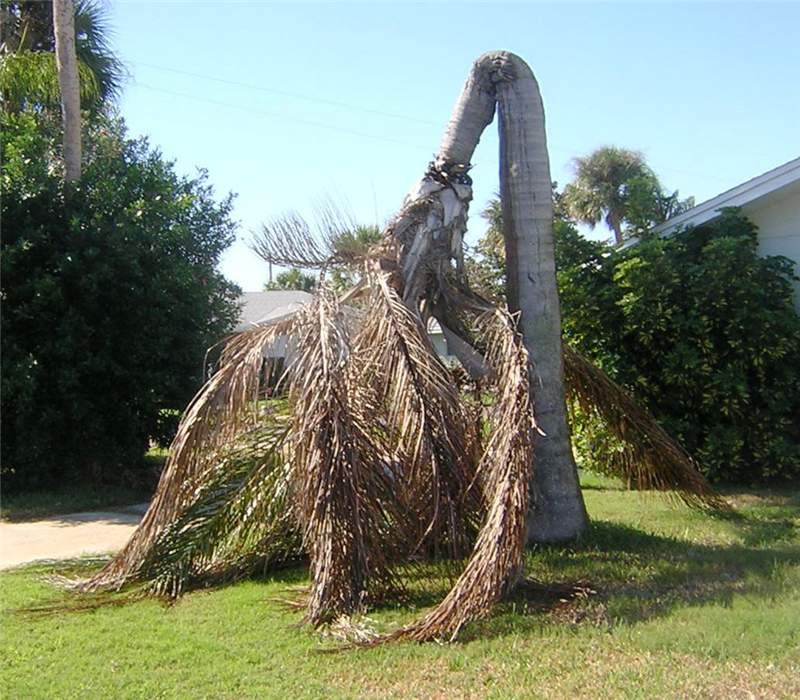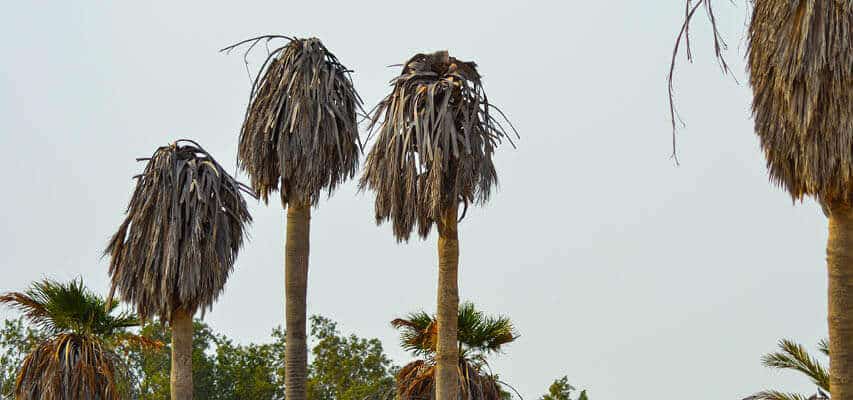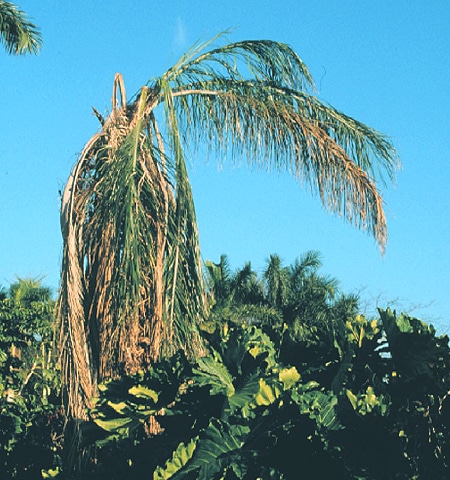Understanding Palm Tree Basics
Palm trees, with their distinctive silhouette, are often associated with tropical and subtropical environments but can thrive in various climates with the right care. Understanding the basic needs and characteristics of palm trees is crucial for maintaining their health and vitality. Palms are a diverse group of plants, with over 2,500 species ranging from towering giants to small, bushy plants. Despite their variety, most palms share some common requirements for light, soil, and water.
Light is a critical factor for palm growth; most species prefer full sun but can tolerate partial shade. The soil should be well-draining to prevent root rot, a common issue in poorly drained soils. While specific nutritional needs vary among species, most palms benefit from a balanced fertilizer designed for palms, applied during the growing season. Watering practices are equally important; overwatering can lead to fungal infections and root rot, while under-watering can stress the plant, leading to yellowing leaves and stunted growth.
Palms also have specific pruning needs. Unlike many trees, palms do not heal from cuts, so pruning should be limited to removing dead or dying fronds to prevent pests and diseases. Understanding these basic care requirements is the first step in diagnosing and treating problems that may arise with palm trees. By providing the appropriate light, soil, water, and nutrients, most common issues can be avoided, ensuring that these iconic plants remain a healthy and vibrant part of the landscape.
Common Signs of Distress in Palm Trees
Identifying signs of distress in palm trees early can be crucial to their health and longevity. One of the most visible signs is the yellowing of palm leaves, which can indicate a range of issues from nutrient deficiencies to improper watering practices. Brown palm fronds, on the other hand, may suggest overwatering, pest infestations, or diseases. It’s important to note that while some browning is natural as fronds age, excessive or sudden changes are a clear distress signal.
Another indicator of a problem is stunted growth or fronds that appear smaller than usual. This can be a sign of a root-bound plant, especially in potted palms, or it could point to a lack of essential nutrients. Wilting or drooping fronds are often a sign of under-watering or possibly a root issue that prevents the palm from absorbing water efficiently.
Leaf spots and frond rot are also common symptoms of palm tree diseases. These conditions can lead to the decay of the palm if not treated promptly. Additionally, the presence of pests can be identified by holes in the fronds, a sticky substance on the leaves (honeydew), or the visible presence of insects on the palm itself.
It’s also crucial to pay attention to the trunk of the palm tree. Cracks, holes, or a spongy texture can indicate physical damage or disease. In some cases, the trunk may start to lean or show signs of weakening, which poses a risk of the tree falling.
Understanding these common signs of distress in palm trees is the first step in diagnosing and addressing any issues. Regular inspection and maintenance can help prevent many of these problems and ensure the health and beauty of your palm trees.

Nutrient Deficiencies and Their Symptoms
Nutrient deficiencies are common in palm trees and can lead to a variety of symptoms that affect the overall health and appearance of the tree. Understanding these deficiencies is crucial for proper palm tree care. One of the most common signs of nutrient deficiency is yellowing palm leaves. This condition, often referred to as chlorosis, can indicate a lack of essential nutrients such as nitrogen, potassium, magnesium, or iron. Each nutrient deficiency presents slightly different symptoms, making it possible to identify the specific lacking element.
For instance, nitrogen deficiency typically causes older leaves to yellow and can lead to stunted growth. Potassium deficiency is particularly detrimental to palm trees, leading to yellowing or browning of leaf tips and margins, and in severe cases, can cause the death of the leaf. Magnesium deficiency manifests as yellow bands along the edges of older leaves, while the center remains green. Iron deficiency results in the yellowing of new leaves with green veins, a condition known as iron chlorosis.
Correcting these deficiencies involves applying the appropriate fertilizer or soil amendments. It’s important to use a palm-specific fertilizer that contains a balanced mix of the nutrients palms need most. Over-fertilization can harm the palm, so it’s crucial to follow the recommended application rates and schedules. In some cases, foliar sprays can be used to address acute deficiencies, providing nutrients directly to the leaves for quick absorption.
Regular monitoring of your palm tree’s health and appearance is key to early detection of nutrient deficiencies. By recognizing the symptoms early and taking corrective action, you can ensure your palm remains healthy and vibrant.
Watering Issues: Overwatering vs. Underwatering
Understanding the balance of watering is crucial for the health of palm trees. Both overwatering and underwatering can lead to significant stress and health issues for these plants. Overwatering is a common mistake that can suffocate the roots of the palm tree, preventing them from absorbing oxygen. This condition can lead to root rot, a deadly situation where the roots begin to decay. Symptoms of overwatering include yellowing leaves, a mushy trunk base, and a general appearance of unhealthiness.
On the other hand, underwatering can also be detrimental to palm trees. Palms require consistent moisture, especially during hot, dry periods. Underwatering can lead to dehydration, evident through symptoms such as brown, crispy leaf edges, slow growth, and drooping leaves. It’s important to note that the soil at the base of the palm should be moist but not waterlogged. A good rule of thumb is to water deeply but infrequently, allowing the soil to dry out slightly between waterings.
To determine the best watering schedule for your palm, consider factors such as the local climate, the season, and the specific needs of your palm species. Over time, observing the response of your palm to watering will guide you to adjust your practices to ensure optimal health and growth. Remember, the goal is to mimic the natural environment of the palm as closely as possible, providing a balance of moisture that supports healthy root and leaf development without encouraging rot or dehydration.

V. Pest Infestations: Identifying and Treating
Pest infestations can severely impact the health of palm trees, leading to yellowing palm leaves, brown palm fronds, and in severe cases, the death of the tree. Identifying the type of pest is crucial for effective treatment. Common palm tree pests include spider mites, palm weevils, and scale insects.
Spider mites are tiny pests that can cause the leaves to appear speckled with yellow spots and lead to overall leaf discoloration. A fine webbing on the underside of the leaves is a telltale sign of their presence. Treatment often involves the use of miticides and ensuring the tree is well-watered, as spider mites thrive in dry conditions.
Palm weevils are another serious pest, particularly for certain species like the Canary Island Date Palm. These pests bore into the trunk, causing visible damage and weakening the structural integrity of the tree. Early detection is key, and infested trees often require professional treatment to remove or inject pesticides directly into the trunk.
Scale insects attach themselves to the leaves and stems, sucking the sap and weakening the tree. They can be identified by their small, shell-like appearance on the palm fronds. Treatment options include horticultural oils or systemic insecticides that target these pests without harming the tree.
Preventative measures, such as regular inspection and maintenance, are essential for keeping palm tree pests at bay. However, in cases of severe infestation, it may be necessary to call a professional to accurately diagnose and treat the problem to ensure the health and longevity of your palm tree.
Diseases Affecting Palm Trees
Palm trees, while robust, are susceptible to a variety of diseases that can compromise their health and aesthetic appeal. Understanding these diseases is crucial for effective management and care. One common disease is Fusarium wilt, a fungal infection that leads to the yellowing and wilting of palm fronds, eventually leading to the tree’s death if not addressed. This disease is particularly challenging because it is soil-borne and can spread to nearby palms.
Another significant disease is Ganoderma butt rot, caused by the fungus Ganoderma zonatum. This disease attacks the palm at its base, leading to the decay of the trunk from the inside out. Symptoms include the appearance of a conk (a mushroom-like growth) at the base of the palm, which is a clear indicator of infection. Unfortunately, there is no cure for Ganoderma butt rot, and infected palms should be removed to prevent the spread of the disease.
Lethal yellowing is a disease caused by a phytoplasma and is transmitted by insect vectors. It leads to the yellowing of palm leaves, premature fruit drop, and the eventual death of the palm. Antibiotic treatment can manage lethal yellowing, but it requires ongoing application and is not a cure.
Preventative measures, including proper fertilization, irrigation, and sanitation practices, can help reduce the risk of these diseases. However, once a palm tree is infected, the treatment options are limited, and in many cases, removal of the affected tree is the only solution to prevent the spread of the disease to healthy palms. Recognizing the signs of these diseases early is key to managing the health of palm trees effectively.

Environmental Stressors and Their Impact
Environmental stressors can significantly affect the health and growth of palm trees. These stressors include extreme temperatures, both hot and cold, which can cause palm trees to struggle. In areas where temperatures drop below freezing, frost damage can occur, leading to brown or blackened fronds. Conversely, extreme heat can lead to sunburn on the leaves, especially in young palms or those recently transplanted without adequate sun protection.
Wind is another environmental factor that can cause physical damage to palm trees. Strong winds can fray or tear palm fronds and, in severe cases, can cause structural damage to the tree. Coastal palms are particularly susceptible to salt spray from the ocean, which can dry out and burn the fronds, leading to a condition known as leaf scorch.
Soil conditions also play a crucial role in the health of palm trees. Poorly draining soil can lead to root rot, while soil that is too sandy may not retain enough water or nutrients. Soil compaction, often a result of heavy foot traffic or construction, can restrict root growth and reduce the tree’s ability to absorb water and nutrients.
Lighting conditions can also stress palm trees. While many palms prefer full sun, those grown in too much shade may become leggy and weak, with elongated stems and sparse frond growth. Conversely, palms suddenly exposed to full sun after being acclimated to shaded conditions may suffer from sunburn.
Understanding these environmental stressors is crucial for diagnosing problems with palm trees. By identifying and mitigating these factors, gardeners can better ensure the health and longevity of their palm trees.
Physical Damage and Its Consequences
Physical damage to palm trees can occur in various ways and can have significant impacts on their health and stability. Common sources of physical damage include landscaping accidents, severe weather events such as hurricanes or strong winds, and improper care practices. Physical injuries to the trunk, roots, or fronds of a palm tree can lead to a host of problems, including increased susceptibility to diseases and pests.
One of the most visible signs of physical damage is wounds or cracks on the trunk. These injuries can compromise the structural integrity of the palm, making it more likely to fall during adverse weather conditions. Additionally, open wounds are perfect entry points for pathogens and pests, which can further deteriorate the palm’s health. Damaged roots, often caused by overzealous digging or construction activities near the tree, can hinder the palm’s ability to absorb water and nutrients, leading to yellowing palm leaves, brown palm fronds, and overall decline in vigor.
Frond damage, whether from improper pruning, vandalism, or environmental factors, can also stress the palm tree. Fronds play a crucial role in photosynthesis and energy production for the tree. When they are damaged, the palm’s growth and health are significantly affected. Over-pruning, in particular, can weaken a palm tree by removing too many fronds, which reduces the tree’s ability to produce food.
To mitigate the consequences of physical damage, it is essential to handle palm trees with care during landscaping activities, prune fronds correctly and only when necessary, and protect palms from known environmental threats whenever possible. In cases of severe damage, consulting a professional arborist can help determine the best course of action to save the tree or prevent further issues.
Preventative Measures for Healthy Palm Trees
Taking proactive steps to ensure the health of your palm trees can significantly reduce the risk of diseases, pests, and other common problems. Here are some key preventative measures to keep your palm trees thriving:
1. Proper Planting: Start by choosing the right location for your palm tree, considering factors like sunlight, soil type, and spacing. Ensure the planting hole is twice as wide as the root ball but no deeper, to prevent waterlogging and root rot.
2. Soil Health: Maintain a healthy soil environment by incorporating organic matter and ensuring proper drainage. This will support root health and reduce the risk of fungal diseases.
3. Adequate Watering: While palm trees require consistent moisture, overwatering can lead to root rot and other issues. Water your palm trees deeply but infrequently, allowing the soil to dry out slightly between watering sessions.
4. Fertilization: Use a palm-specific fertilizer that contains the right balance of nutrients, including nitrogen, potassium, and magnesium, to prevent nutrient deficiencies. Follow the manufacturer’s instructions for application rates and timing.
5. Regular Monitoring: Keep an eye on your palm trees for any signs of distress, such as yellowing leaves, brown fronds, or stunted growth. Early detection of problems can make treatment more effective.
6. Pest and Disease Management: Implement integrated pest management practices to control palm tree pests. This may include cultural, biological, and chemical methods, depending on the severity of the infestation. Regularly inspect your palms for signs of disease and treat promptly with appropriate fungicides or bactericides.
7. Pruning: Remove dead or dying fronds, flowers, and fruit stalks to improve air circulation and reduce the risk of pest infestations and diseases. However, avoid over-pruning, as this can stress the tree and lead to further health issues.
By following these preventative measures, you can help ensure your palm trees remain healthy and vibrant, effectively minimizing the risk of common problems.
When to Call a Professional: Recognizing Severe Problems
Identifying when to seek professional help for your palm tree is crucial in preventing irreversible damage or even the loss of the tree. While many palm tree issues can be managed with proper care and maintenance, certain conditions warrant the expertise of a professional. If you notice any of the following severe problems, it’s time to call in an expert:
Advanced Palm Tree Diseases: Diseases such as Fusarium wilt, lethal yellowing, or bud rot can be fatal if not treated correctly. These diseases often require specific chemical treatments or management strategies that are best handled by professionals.
Severe Pest Infestations: While minor pest issues can be controlled with over-the-counter insecticides, severe infestations of pests like the palm weevil or scale insects might require more potent treatments or integrated pest management strategies that only a professional can provide.
Structural Damage: If your palm tree shows signs of structural damage, such as a leaning trunk, cracks, or large, broken fronds from storm damage, a professional arborist can assess the risk of the tree falling and determine the best course of action, which might include bracing, pruning, or in some cases, removal.
Unknown Conditions: Sometimes, the symptoms your palm tree exhibits might be difficult to diagnose, showing signs of multiple issues or not responding to standard treatments. In such cases, a professional with experience in palm tree care can offer a diagnosis and tailored treatment plan.
Remember, timely intervention by a professional can save your palm tree from severe damage or death. Don’t hesitate to seek expert advice when you’re unsure of the problem or its severity.
